Few companions in Baldur’s Gate 3 are as popular as Shadowheart. If you’re infatuated by the mystical High Elf, you’ll want to turn her into the most powerful version of herself, which means you’ll want the best Shadowheart build in BG3.
You’re in the right place! Keeping Shadowheart at the top of her game will also keep you alive for longer. And if you get the build right, the Cleric will also become a formidable damage dealer. Let’s get into the details of the best Shadowheart build in BG3.
Table of contents
- Base Shadowheart information and features
- Best Shadowheart build in Baldur’s Gate 3 at a glance
- Best Shadowheart build level-by-level Feat and Spell progression
- Best weapons, gear, and armor for Shadowheart in BG3
- Best consumables, potions, and items for Shadowheart in BG3
- Combat tips for Shadowheart in BG3
Base Shadowheart information and features

Starting default stats:
| STR | DEX | CON | INT | WIS | CHA |
|---|---|---|---|---|---|
| 13 (12+1) | 13 | 14 | 10 | 17 (15+2) | 8 |
Class: Cleric (Trickery)
Race: Half-elf (High Elf)
Background: Acolyte
Racial Features:
Darkvision: Can see in the dark up to 12m/40ft.
Fey Ancestry: Advantage on Saving Throws against being Charmed, and magic can’t put you to Sleep.
Civil Militia: You have Weapon Proficiency with spears, pikes, halberds, and glaives, and Armour Proficiency with Light Armour and Shields.
High Half-elf subrace feature: Wizard cantrip (Firebolt)
Class Features:
Domain Spells: You gain spells from your domain. They are Always Prepared.
Equipment proficiency: Simple weapons, flails, morningstars, light armour, medium armour, and shields.
Unique Feature:
Fear of Wolves: Shadowheart’s scalp prickles with fear when she encounters wolves. If she steps within 30ft/9m of a lupine creature, she must make a Wisdom Saving throw or become Frightened.
Overview:
Disregarding a custom Tav/Dark Urge, Hirelings, and complete respecs via Withers, Shadowheart is the only one of your starting companions capable of filling a healer/support role in your party. You don’t have access to any other companions with healing spells until you can recruit Halsin or Minthara—and even then, their default class abilities are more geared towards DPS with healing as a side utility.
So, for most intents and purposes, Shadowheart is your only dedicated healer aside from a cleric or paladin player character. She’s a star player in your party the second you meet her and only gets more essential as enemy levels rise throughout the game. And it’s not just because of her healing, either—the cleric class is especially powerful in Baldur’s Gate 3, and Shadowheart can contribute to healing utility as well as enemy control and DPS with just her base cleric abilities.
However, in the latter parts of the game—or from the beginning at higher difficulty settings—it’s clear that her default stat spread is far from optimized. Aside from the appropriately high WIS as her primary spellcasting stat, her numbers are averaged across STR, DEX, and CON instead of committing to a solid set of secondary and tertiary stats that take advantage of her existing class and racial features. This means middling to below-average melee damage, AC, initiative, and sturdiness across the board that limits her effectiveness as a frontline supporter or a backline healer.
That’s not to say that she isn’t effective at all with her default setup. Her stats are perfectly serviceable in most cases—however, if you want to optimize her for Tactician/Honor mode or just a more streamlined gameplay experience overall, you’ll want to take her to Withers for a respec as soon as possible.
Best Shadowheart build in Baldur’s Gate 3 at a glance
Unlike some other classes, Cleric actually gives you very little to “build” on the actual level-up screens themselves. Each level comes with a predetermined list of spells that you can pick and choose from in the spellbook menu at any time outside of combat, so all the permanent Cleric level-up customizations consist of Feat selection and the odd extra Cantrip options.
Here’s a breakdown of the selections you’ll be making at every level to use as an easy reference, and we’ll go over the optimal spell loadouts at each level further down.
New stat spread:
| STR | DEX | CON | INT | WIS | CHA |
|---|---|---|---|---|---|
| 10 | 14 | 16 (15+1) | 10 | 16 (14+2) | 8 |
Feat Selection:
| Level 4 | Level 8 | Level 12 |
|---|---|---|
| War Caster | Ability improvement (plus two WIS) | Ability improvement (plus two WIS) |
*Note that there are multiple late-game items that grant advantage on saving throws. If you have one equipped to Shadowheart, feel free to respec her to have Resilient (Constitution) for extra proficiency points.
Class: Cleric 12 / Life Domain
Level 1:
- Cleric Cantrips selection: Guidance, Produce Flame, Sacred Flame
Level 4:
- New Cantrip: Resistance
- Feat selection: War caster
Level 8:
- New Feat: Ability Improvement (plus two to WIS)
Level 10:
- New Cantrip: Thaumaturgy
Level 12:
- New Feat: Ability Improvement (plus two to WIS)
Best Shadowheart build in Baldur’s Gate 3 stat and subclass breakdown
While her new stat spread does take away one point from WIS, the investment into CON is worth it because her ability to keep concentration on spells is a higher priority than her ability to put out consistent damage via high Spell Save DCs. Furthermore, it increases her HP and survivability, which becomes incredibly important as she gains powerful melee spells like Spirit Guardians.
The rest of her stats are more flexible and can be rearranged by personal preference. We’ve elected to build her DEX over STR because it gives her better AC, initiative, and ranged weapon damage only at the expense of melee damage. Since Cleric never gets an extra weapon attack (unless you take the War domain) and struggles to keep up with the damage output of other melee classes past level five, this is a pretty good tradeoff to help maximize her combat utility. Being able to act early to set up her concentration spells and position herself goes a long way when playing her as a support character.
However, if you’d prefer to build her so that she does more than just look pretty with the goddess-given weapons obtained from her companion quests, you can opt to switch her STR and DEX stats instead. The fact that the Life domain also gives proficiency in Heavy Armor helps offset the AC loss as well. While this does make her a slow combatant that can never really compete with the melee damage of other characters like Karlach, it’s not necessarily a deal-breaker unless you’re playing on Honor mode.
Additionally, you can trade off combat efficiency for story utility by investing those points into INT or CHA instead. Our stat spread assumes you’re using her as a companion to another origin character or a custom Tav/Dark Urge, but the extra points in the latter half of the stat list can really help with passing important story checks when playing as Shadowheart herself as the main protagonist.
So why the Life domain?
The biggest reason is that it makes her the best at the role she naturally fills as the party’s only cleric. The myriad of healing or heal-augmenting abilities you get from this subclass makes it easier to keep the party on their feet during tough encounters, as well as providing alternate means to heal the party through Channel Divinity charges instead of precious spell slots. Essential high-priority Cleric spells—such as Bless or Mass Cure Wounds—also take up the majority of the Always Prepared Life domain spells, leaving more room and flexibility for other options.
Overall, the Life domain makes her a powerful cleric regardless of situation or party makeup, whereas the Trickery domain only really shines when paired with other stealth-oriented classes. While multiclassing into an Assassin Rogue or a Gloom Stalker Ranger as a Trickery Cleric can become extremely powerful, it leaves her support capability a little lacking at higher levels when you’re facing off against devastating attacks from legendary creatures and bosses.
Furthermore, Trickery’s main Channel Divinity requires Concentration, but is never more useful in combat than other high-priority and powerful Concentration spells from the basic Cleric spell list.
The secondary argument for the Life domain is a little more arbitrary. Baldur’s Gate 3 makes no mention of it, but every deity in 5e technically has a handful of domains that they favor for lore purposes. Trickery is the only one of Shar’s domains that is available in BG3, and Selûne counts Knowledge and Life among her personal domains.
The Knowledge domain is somewhat lackluster from a gameplay standpoint unless you’re specifically playing a Shadowheart origin, making the Life domain a shoo-in for a Selûnite Shadowheart companion.
However, depending on how much your immersion and roleplay experience is impacted by details like subclasses, you may opt to go with some other powerful domains like Light for Shadowheart instead. The fortunate part is that the bulk of what makes a mono-class level 12 Cleric so powerful in BG3 comes from the base abilities of the Cleric class itself, not the subclass features. You could pick any domain you’d like and change little about Shadowheart’s role in the party and her general gameplay flow.
If you’d like to make a more informed decision on whether to keep her original subclass or respec, here’s a quick breakdown of the Trickery and Life Domains.
Cleric Subclass features for Trickery, Life, and Light Domain
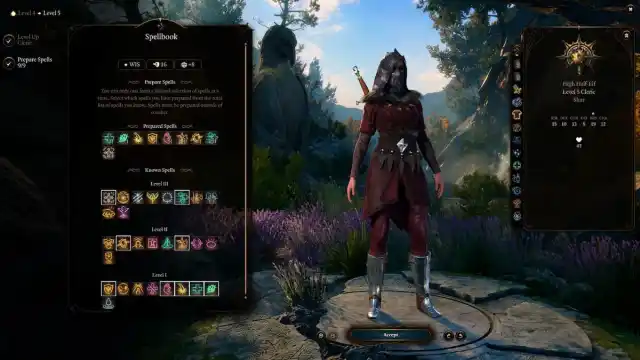
| Feature | Trickery | Life |
|---|---|---|
| Level 1 subclass feature | Blessing of the Trickster | Disciple of Life |
| Level 1 spells | Charm Person Disguise Self | Bless Cure Wounds |
| Level 2 Channel Divinity action | Invoke Duplicity | Preserve Life |
| Level 3 spells | Mirror Image Pass Without a Trace | Aid Lesser Restoration |
| Level 5 spells | Bestow Curse Fear | Revivify Beacon of Hope |
| Level 6 subclass feature | Cloak of Shadows | Blessed Healer |
| Level 7 spells | Dimension Door Polymorph | Guardian of Faith Death Ward |
| Level 8 subclass feature | Divine Strike: Poison | Divine Strike: Radiant |
| Level 9 spells | Dominate Person Seeming | Greater Restoration Mass Cure Wounds |
Level 1:
Trickery:
- Blessing of the Trickster (Grant another creature Advantage on Stealth checks.)
- Domain spells:
- Charm Person (Charm a humanoid to prevent it from attacking you. You gain Advantage on Charisma Checks in dialogue.)
- Disguise Self (Magically change all aspects of your appearance. Can be cast as a ritual spell outside of combat.)
Life:
- Disciple of Life (Your devotion empowers your healing Spells. When casting a healing spell, the target regains additional 2 plus the spell’s level hit points.)
- Heavy Armour Proficiency
- Domain spells:
- Bless (Bless up to 3 creatures. They gain a 1d4 bonus to Attack rolls and Saving throws.)
- Cure Wounds (Heal a creature you can touch for 1d8 plus your spellcasting modifier.)
Level 2:
Trickery:
- Invoke Duplicity (Channel Divinity Action: Summon an illusion to distract your enemies. You and your allies receive Advantage on attack rolls against a creature if both the attacker and the illusion are within 3m / 10ft of it.)
Life:
- Preserve Life (Channel Divinity Action: Evoke a healing energy that restores 3x Character Level hit points to allied creatures. Has no effect on undead and constructs.)
Level 3:
Trickery
- Domain spells:
- Mirror Image (Create three illusory duplicates of yourself to distract attackers. Each duplicate increases your Armour Class by three.)
- Pass Without a Trace (Call forth a veil of shadow and silence that gives you and nearby allies a plus 10 bonus to Stealth checks.)
Life
- Domain spells:
- Aid (Bolster your allies with toughness and resolve to heal and increase their Hit Points maximum.)
- Lesser Restoration (Cure a creature from Diseased, Poisoned, Paralysis, or Blinded statuses.)
Level 5:
Trickery:
- Domain spells:
- Bestow Curse (Curse a creature with your touch. The curse either bestows Disadvantage on Ability checks and Saving throws, Disadvantage on Attack rolls, lets you deal additional damage to the target, or robs it of its Actions.)
- Fear (Targets drop everything and become Fearful: they have Disadvantage on Ability Checks and Attack Rolls.)
Life:
- Domain spells:
- Revivify (Revive a companion. They return to life with 1 Hit point.)
- Beacon of Hope (Your allies will regain the maximum Hit Points possible when healed. They also gain Advantage on Wisdom Saving throws and Death Saving Throws.)
Level 6:
Trickery:
- Cloak of Shadows (Channel Divinity Action: Wrap yourself in shadows to become Invisible if you are Obscured.)
Life:
- Blessed Healer (You regain two plus the spell’s level hit points when casting a healing spell on another creature.)
Level 7:
Trickery:
- Domain spells:
- Dimension Door (Teleport yourself and up to one adjacent ally to a place you can see. The ally cannot be larger than Medium.)
- Polymorph (Transform a creature into a harmless sheep. If the sheep’s Hit Points drop to zero, the target reverts to its original form with its original Hit Points.)
Life:
- Domain spells:
- Guardian of Faith (Call forth a divine guardian that attacks nearby enemies. Every time it deals damage, the guardian loses an equal amount of Hit Points.)
- Death Ward (Protect a creature from death. The next time damage would reduce it to 0 Hit Points, it remains conscious with one Hit Point left.)
Level 8:
Trickery:
- Divine Strike: Poison (Deal 1d8 Poison damage in addition to your weapon’s weapon damage.)
Life:
- Divine Strike: Radiant (Deal 1d8 Radiant damage in addition to your weapon’s weapon damage.)
Level 9:
Trickery:
- Domain spells:
- Dominate Person (Dominate a nearby humanoid. Allies are unaffected. Every time the creature takes damage, it may repeat the Saving throw against your domination.)
- Seeming (Disguise up to 4 members of your adventuring party until your next long rest.)
Life:
- Domain spells:
- Greater Restoration (Touch a creature and negate any Charm, Petrification, Stun, or Cursed statuses.)
- Mass Cure Wounds (Unleash a soothing hum of energy that heals you and nearby allies for 3d8 plus your spellcasting modifier.)
In a tabletop setting, respecs are usually only permitted when justified by a major story change for the character. While you can respec into anything at any point in Baldur’s Gate 3, a popular trend amongst Shadowheart enthusiasts is to wait for her pivotal character moment in Act 2 before reclassing her out of the Trickery Domain; try it out in your own playthrough for that extra roleplaying kick.
Best Shadowheart build level-by-level Feat and Spell progression
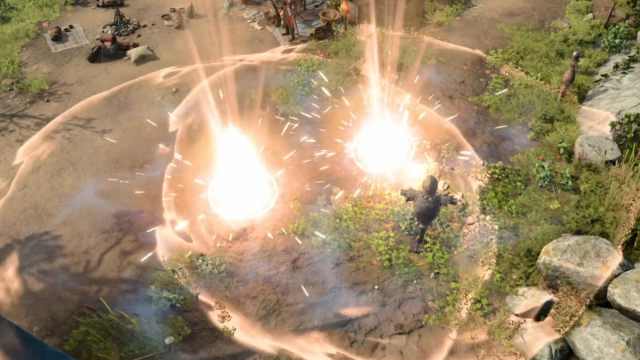
Priority spells to keep prepared if you’re choosing a different Domain are marked with an asterisk*.
Level 1:
- Subclass: Life Domain
- Cleric Cantrips selection: Guidance, Produce Flame, Sacred Flame
- Domain spells: Bless*, Cure Wounds*
- Spell loadout: Guiding Bolt, Healing Word, Shield of Faith, Command
Other options for spells include Sanctuary if you want to be prepared for potentially dire situations or Bane if you want Shadowheart to be more aggressive with her concentration spells. Inflict Wounds is a powerful spell but a melee one, and ideally, you’d be keeping Shadowheart safely in the back at this level. Protection from Good and Evil may come in handy later on, but this early into the story, you won’t meet many enemies that fall under the affected categories. Create or Destroy Water can be situationally useful outside of battle, so feel free to prepare and then un-prepare it as needed.
While it might seem unconventional, the Cleric cantrips include Produce Flame because it’s a more reliable source of cantrip damage than Sacred Flame at early levels. Sacred Flame only starts to kick in later on when Shadowheart’s spellcasting starts to catch up to enemy DEX saves, at which point you can respec her to have Resistance instead.
Level 2:
- Channel Divinity charge
- Channel Divinity ability: Turn Undead, Preserve Life
- Spell loadout: Guiding Bolt, Healing Word, Shield of Faith, Command, Sanctuary
For now, you should be trying to save your Channel Divinity charges for Preserve Life. While Turn Undead will become an extremely powerful ability later on—especially in the undead-rife settings in Act 2—you won’t find much use for it now.
Additionally, you get one more Prepared Spell slot. We recommend Sanctuary to help keep people alive as you start to encounter more powerful enemies while still fielding pretty low AC and HP scores amongst your companions.
Level 3:
- Domain spells: Aid, Lesser Restoration*
- Spell loadout: Guiding Bolt, Healing Word, Command, Spiritual weapon, Sanctuary, Hold Person
The Cleric’s first set of new spells already has a handful of very powerful options to choose from. Spiritual Weapon adds a minor party member to help deal damage, disrupt enemies, and/or control the battlefield with numbers. Not to mention, it can help target Bludgeoning, Piercing, or Slashing damage vulnerabilities you might encounter that you aren’t properly equipped against at the time.
Command will still be helpful at this stage, but Shadowheart now also has access to Hold Person, which can be a tide-turner in many battles.
Level 4:
- New Cantrip: Resistance
- New Feat: War Caster
- Spell loadout: Guiding Bolt, Healing Word, Command, Spiritual weapon, Sanctuary, Hold Person, Protection From Evil and Good
While you may be tempted to take Ability Improvement to bump WIS up to 18, War Caster is a priority as you won’t get the chance to take another feat until reaching level eight at or near the end of Act 2. Shadowheart will gain multiple powerful concentration spells between now and then, and it’s much more effective to ensure that she’s got a good shot at succeeding concentration checks to maintain them.
Level 5:
- Class feature: Destroy Undead
- Domain spells: Revivify*, Beacon of Hope
- Spell loadout: Guiding Bolt, Healing Word, Command, Sanctuary, Animate Dead, Mass Healing Word, Glyph of Warding, Spirit Guardians
This is where Cleric gameplay really ramps up, especially as you start moving into Act 2 and its horde of undead enemies. First off, you can try to split your Channel Divinity charges between Preserve Life and Turn Undead as needed—Destroy Undead makes Turn Undead effectively a massive AoE attack to all undead in the area that can completely turn the tide against the myriad of shadow-cursed undead in Act 2.
Furthermore, you finally get the best Cleric spell you’ll use for the rest of the game: Spirit Guardians. Sometimes affectionately known as the Cleric’s “BeyBlade of Death,” this spell turns Shadowheart into a walking AoE attack that does significant amounts of damage simply by keeping up concentration. However, this also means that you need to start taking Shadowheart’s defense much more seriously with better gear and ally positioning to ensure she doesn’t get downed while in melee range.
If you’re confident in Shadowheart’s defenses, taking the Disengage action and simply walking through enemies with Spirit Guardians active is a great way to deal massive damage to big undead hordes.
Level 6:
- Subclass feature: Blessed Healer
- Spell loadout: Guiding Bolt, Healing Word, Command, Sanctuary, Animate Dead, Mass Healing Word, Glyph of Warding, Spirit Guardians, Daylight
While you won’t get much use for Daylight later on, it’s extremely powerful while you’re trying to navigate the Shadow-cursed Lands due to the number of enemies with light vulnerabilities. Furthermore, Blessed Healer really starts to help keep Shadowheart’s health up while she’s healing party members—eventually, its additional modifiers will make the Ring of Salving redundant if you have that equipped to Shadowheart.
Level 7:
- Domain Spells: Guardian of Faith*, Death Ward*
- Spell loadout: Guiding Bolt, Healing Word, Command, Sanctuary, Animate Dead, Mass Healing Word, Glyph of Warding, Spirit Guardians, Daylight, Banishment
Unfortunately, none of the new spells you get at this level are particularly game-changing the way that acquiring Spirit Guardians is. However, slotting either Banishment can be situationally useful in more difficult battles.
Level 8:
- Subclass Feature: Divine Strike: Radiant
- New Feat: Ability Improvement (plus two to WIS)
- Spell loadout: Guiding Bolt, Healing Word, Command, Sanctuary, Animate Dead, Mass Healing Word, Glyph of Warding, Spirit Guardians, Daylight, Banishment,
You’ll be taking an Ability Improvement feat to bump up WIS to 18, upgrading all of Shadowheart’s spellcasting by one degree. As previously stated, consider respeccing to give Shadowheart Resilient (Constitution) at level four instead of War Caster if you have a gear piece that grants her Advantage on Constitution Saving throws.
Level 9:
- Domain spells: Greater Restoration*, Mass Cure Wounds*
- Spell loadout: Guiding Bolt, Healing Word, Command, Sanctuary, Mass Healing Word, Glyph of Warding, Spirit Guardians, Daylight, Banishment, Death Ward, Flame Strike, Planar Binding, Insect Plague
From here on out, you should always have a Deva summoned to help you out in fights. Unlike Spiritual Weapon, there’s no time limit, and it doesn’t take up concentration. While it does spend a spell slot, it’s more than worth it to have a flying paladin that can both smite and Revivify in emergency situations.
Insect Plague is a great way to create chokepoints that hamper even powerful enemies—however, you should be careful not to place them to choke off your own party members from being able to close in.
Level 10:
- Class Feature: Divine Intervention
- New Cantrip: Blade Ward
- Spell loadout: Guiding Bolt, Healing Word, Command, Sanctuary, Mass Healing Word, Glyph of Warding, Spirit Guardians, Daylight, Banishment, Warding Bond, Flame Strike, Planar Binding, Insect Plague, Remove Curse
Your choice of Cantrip doesn’t make a huge difference here. Blade Ward can be useful, but you probably won’t have much use for it in actual combat at this level—you may as well take Thaumaturgy for situational bonuses in conversation checks.
Remove Curse will also come in handy, especially in Act Three as you encounter more and more cursed items in and out of combat.
Level 11:
- Spell loadout: Guiding Bolt, Command, Sanctuary, Mass Healing Word, Glyph of Warding, Spirit Guardians, Banishment, Warding Bond, Flame Strike, Planar Binding, Insect Plague, Remove Curse, Heroes’ Feast, Planar Ally, Heal
Here comes the last big game changer in the Cleric level progression: Heroes’ Feast. It has a massive area of effect that bestows a non-concentration condition that lasts until the next long rest. You should be casting it at the start of every day to grant immunity to Disease and Frightened conditions, Wisdom Saving Throw Advantage, and a max HP bonus of 12.
Level 12:
- New Feat: Ability Improvement (plus two to WIS)
- Spell loadout: Guiding Bolt, Command, Sanctuary, Mass Healing Word, Glyph of Warding, Spirit Guardians, Banishment, Warding Bond, Flame Strike, Planar Binding, Insect Plague, Remove Curse, Heroes’ Feast, Planar Ally, Heal, Harm Strike, Planar Binding, Insect Plague, Remove Curse, Heroes’ Feast, Planar Ally, Heal, Harm
Best weapons, gear, and armor for Shadowheart in BG3

Quality gear will naturally play an important role in achieving the best Shadowheart build in BG3. With a support Shadowheart, it is important to prioritize items that reward her for buffing and healing allies:
- As we prefer our Shadowheart to be at the back, the best weapon for her was the Markoheshkir, found near the bottom of Ramazith’s Tower. The bonus to attack rolls and spell DCs and the free spell per day are exactly what she needs.
- Dark Justicar Half-Plate turns Shadowheart into a full-on tank, as she can very easily keep Shield of Faith active at all times. It also gives advantage on Constitution saving throws, which she needs to retain her concentration.
- Any item that provides a boost to healing or protection is great for Shadowheart, so her best head slot item is Wapira’s Crown. It restores 1d6 hit points when healing others, and with Healing Word and Channel Divinity, that’ll happen often. The Fistbreaker Helm is a great option if you want her Hold Persons or Banishments to be more effective.
- The Amulet of Misty Step is another great item for Shadowheart due to the sheer strength of Misty Step. Clerics don’t get easy access to teleports, so Shadowheart can use this as a bonus action to get to an ally and Heal them. It saved me more than once during Hold Person-athons like the Githyanki encounters in Act Three.
- The Shield of Devotion is very rare but well worth hunting for, as it allows you to use your reaction to knock an enemy prone when hit with a melee attack unless they succeed a Dexterity Saving Throw. Clerics don’t get many reaction spells in BG3, making this a clear choice for a frontline Shadowheart.
- The Hellrider’s Pride gloves are perfect for Shadowheart. They let her buff a target with resistance to physical damage (or the entire party) as a bonus action using Healing Word and Mass Healing Word.
- Boots of Aid and Comfort provide healed targets with a small pool of temporary HP.
- The Vivacious Cloak, from the Grand Mausoleum, is great for any type of Shadowheart, giving her an easy and consistent source of temporary hitpoints.
- The Whispering Promise is a must-have ring for a Life Shadowheart, providing massive bonuses to targets whenever you heal them.
- The other perfect Shadowheart Ring is the Ring of Regeneration, which procs all of your self-healing effects every turn. Hellrider’s Pride plus Whispering Promise makes Shadowheart very hard to kill and a menace on the frontlines.
A fully kitted-out healing Shadowheart is a blessing to behold, using Healing Word to restore large amounts of health to allies while also giving them bonuses to attack and saving throws, resistance to physical damage, and temporary HP. She herself copies many of these effects, making her a vicious tank and a potent damage dealer as well.
Best consumables, potions, and items for Shadowheart in BG3
The Potion of Speed is by far the best potion in the game, providing double movement speed, an extra action, +2 Armor class, and Advantage on Dexterity Saving Throws. With this, you can move Shadowheart around wherever you need to heal—and it’s particularly effective when you’re saving a downed ally, as you can follow up with immediate Healing.
Alternatively, a Hasted Shadowheart can cast a devastating spell like Banishment and then Preserve Life on the same turn—healing and buffing allies at the same time as she removes a big threat from the fight.
Healing Potions are a great item for Shadowheart, but not for the traditional reasons. While the Life Domain does not buff their healing, they still count as healing for your magical items. A tapped-out Shadowheart can throw these at allies to grant the buffs of your magic items, which is great. It’s also very important to keep Shadowheart as healthy as reasonably possible anyway.
Any throwable with an AoE is also a good choice for Shadowheart. She’s also a reasonable scroll carrier since she’s a good character to wear several items that buff spellcasting DCs. Scrolls use her DCs, so buff them up and watch her “cast” Fireball like a champ.
Combat tips for Shadowheart in BG3
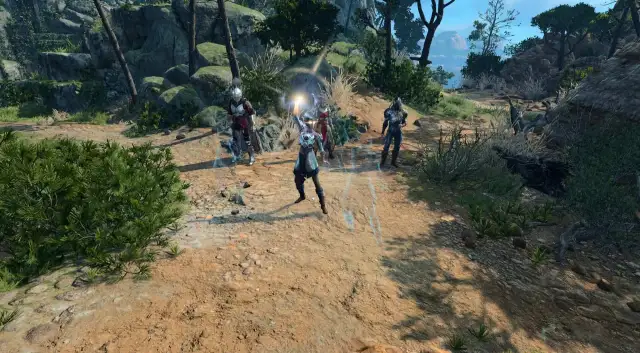
Whenever you see enemies ahead and know that a fight is about to happen, cast Bless outside of combat so you don’t have to use a turn doing so. Then, Shadowheart’s focus in combat should be to heal allies whenever necessary. Early on, this just means keeping them from dying and giving them back their turn when they fall unconscious. However, as soon as you get the Hellrider’s Gloves, this all changes.
Heal your allies whenever they are missing health and are in melee combat. This gives them resistance to physical damage as well as various boons from The Whispering Promise. Healing Word is a great way to do this. Additionally, your Channel Divinity: Preserve Life can heal multiple allies as an action, and Mass Healing Word can do so as a bonus action.
On the first turn, using Guiding Bolt is the perfect start. It can inflict significant damage, and your allies usually won’t need healing this early. As you level up, your first turn will change from focusing on damage to focusing on crowd control.
You’ll replace Guiding Bolt with spells like Hold Person or Banishment that lock targets out of the fight, and you’ll get a Spiritual Weapon that hounds enemies for several turns afterward. Banishment is especially helpful during caster-heavy battles in the late game, when giving enemies too many turns is a death sentence.
Try to stay at a medium range from your allies, so you can heal whoever needs it. Don’t be afraid to back off with Shadowheart in a fight rather than attacking with her. She’s durable but not made of steel. Feel free to give her cloaks with Absorb Elements, like the Cloak of Elemental Absorption, before specific magic encounters—or against dragons.
Approach enemies with Shadowheart only if you have a good reason, like having Spirit Guardians active after healing her and granting her Hellrider resistances. Utilize the Misty Step amulet the moment an ally needs help or if she starts to falter. It’s extremely important to keep her alive, as she’s the glue that holds a competent team together.
It’s important to treat Shadowheart with respect in fights, as she can deal massive damage with the right investment into spells. That said, there’s a fantastic number of healing support items in BG3, and Shadowheart is a highly potent addition to any party.
Others Asked
What is one way players can first encounter Shadowheart in Baldur's Gate 3?
Players can first encounter Shadowheart by saving her from a Mindflayer pod.
Who is Shadowheart in Baldur's Gate 3?
Shadowheart is a character in Baldur's Gate 3 who becomes the focus of the author's affection, leading to feelings of guilt and self-reflection.
What is the main benefit of having Shadowheart in your party in Baldur's Gate 3?
Shadowheart provides a great source of healing and can inflict status effects on enemies, making her a must-have in any party composition.




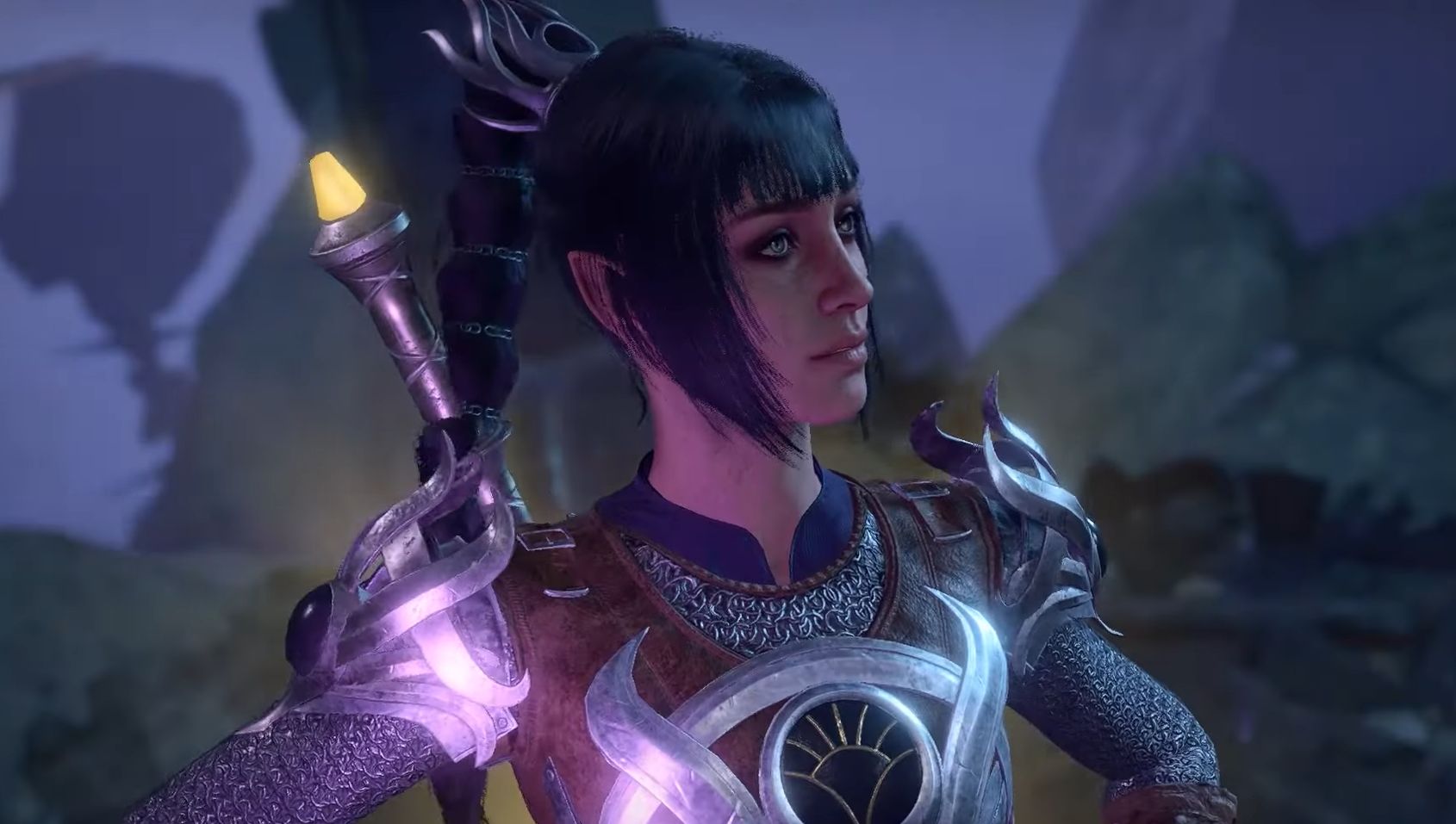
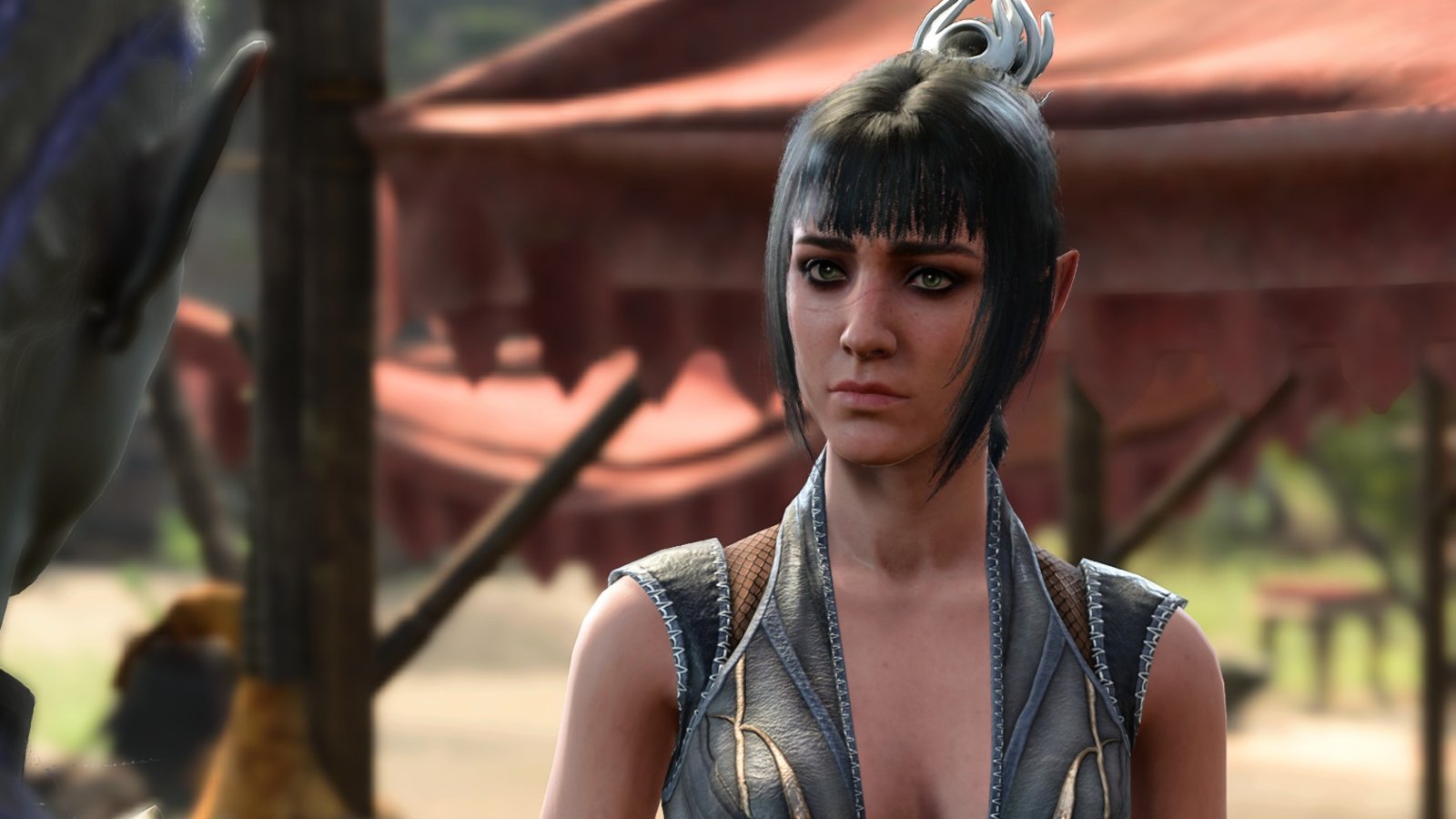
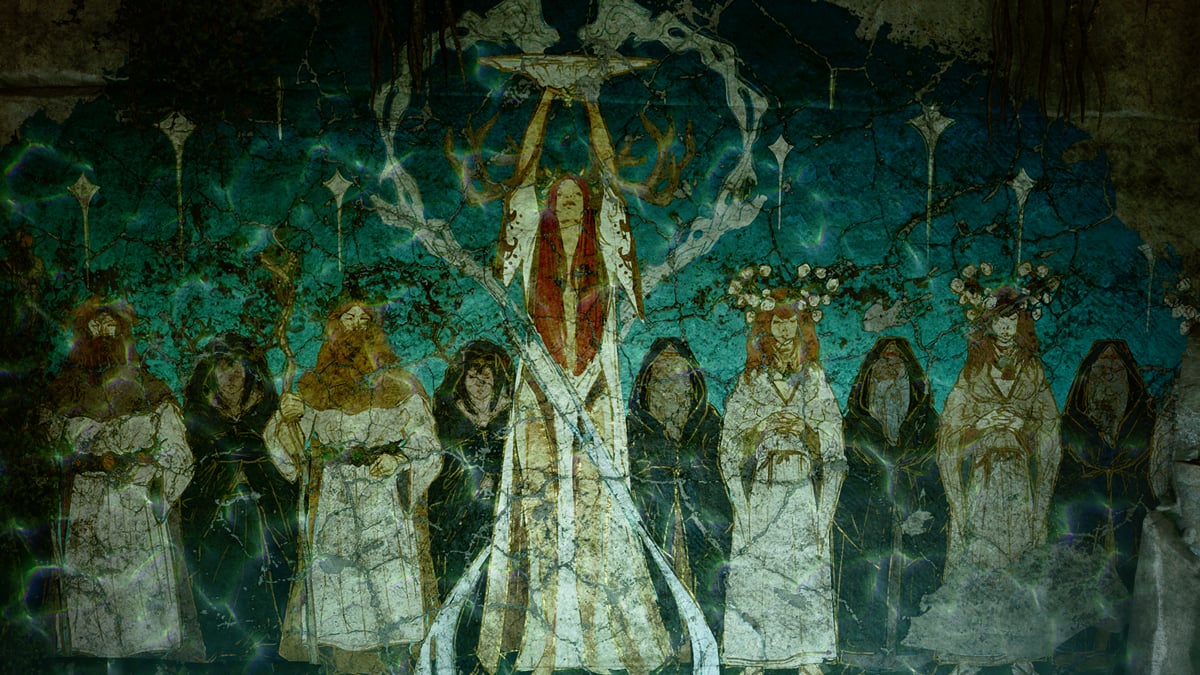
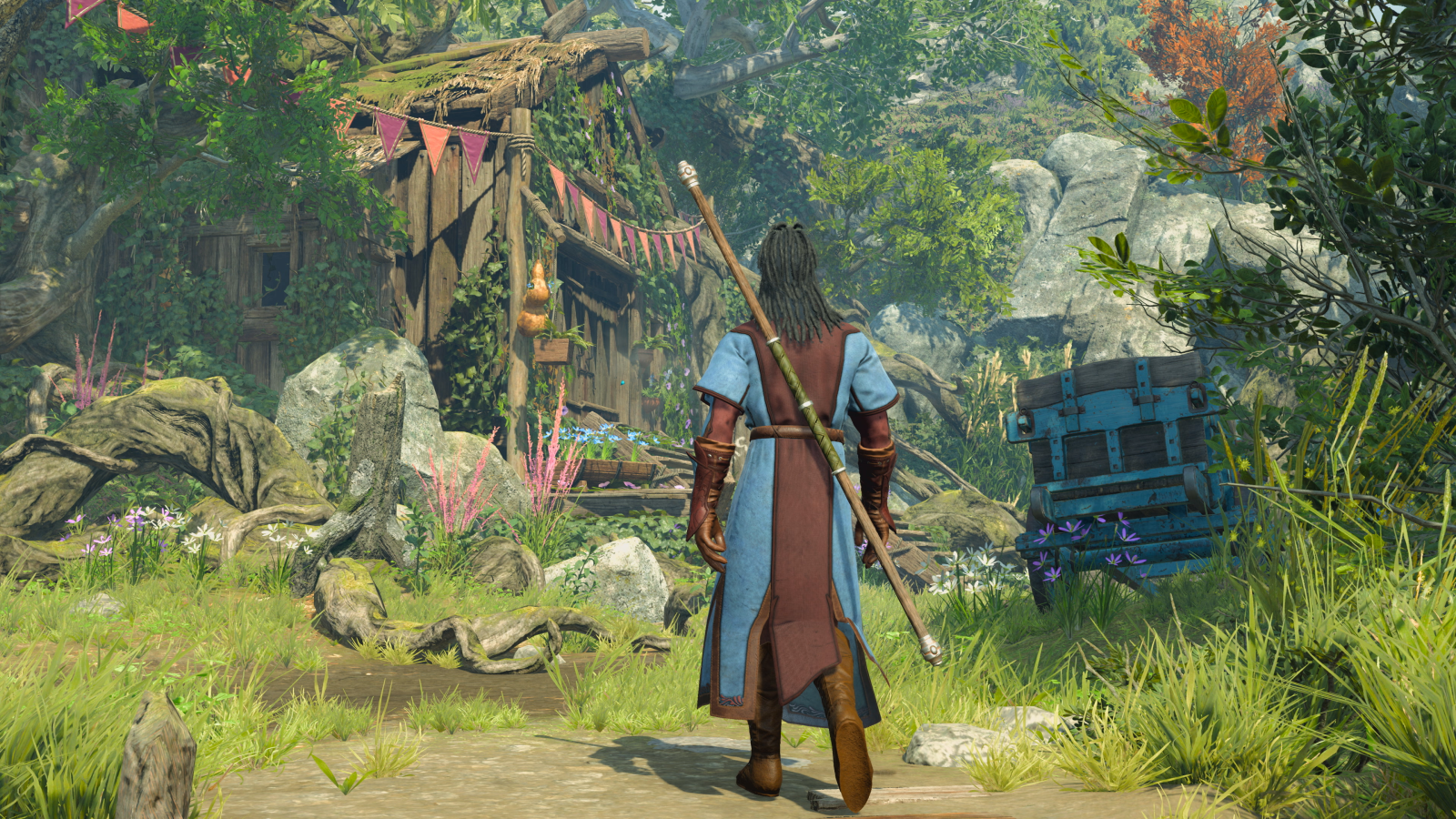

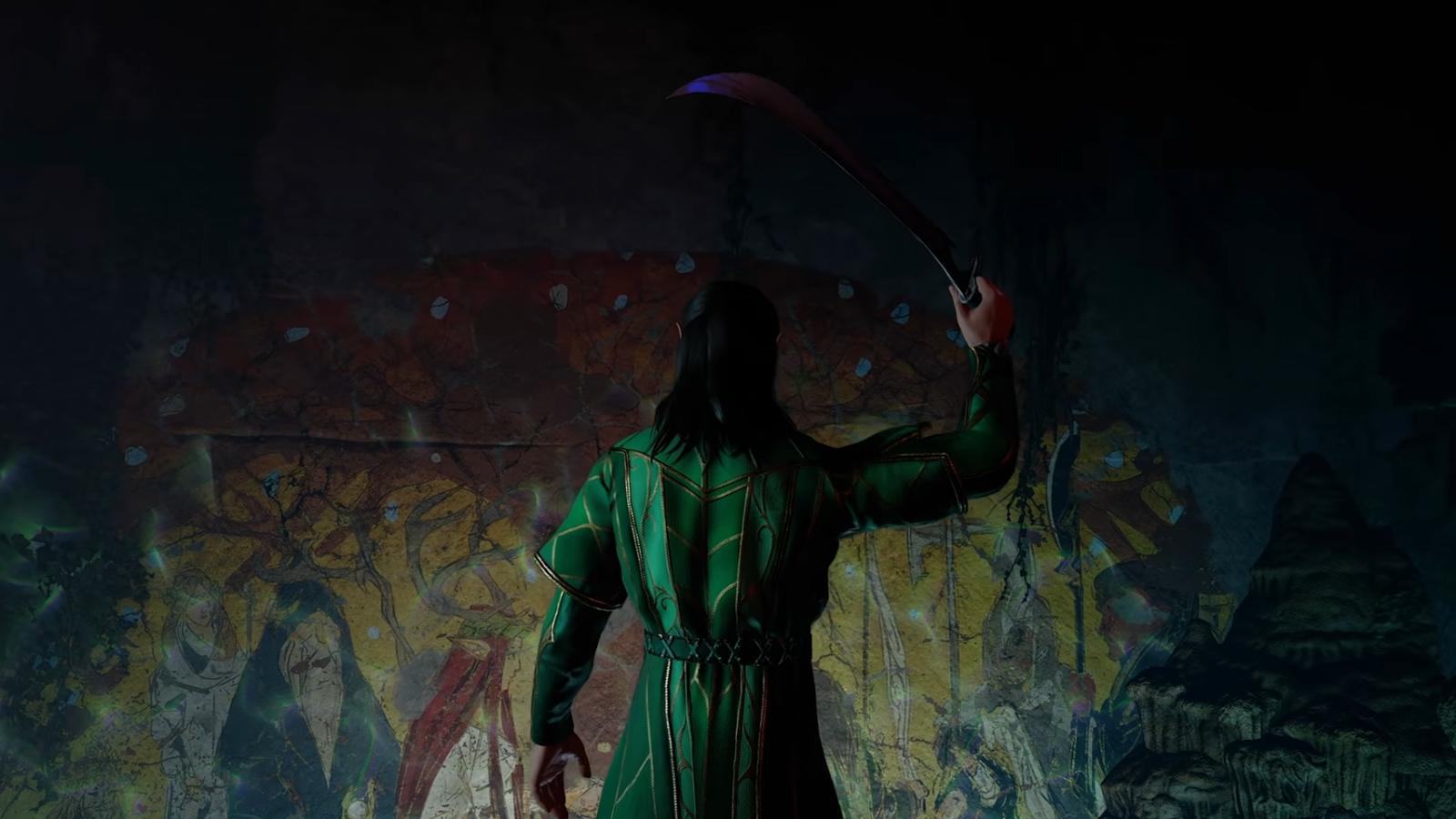

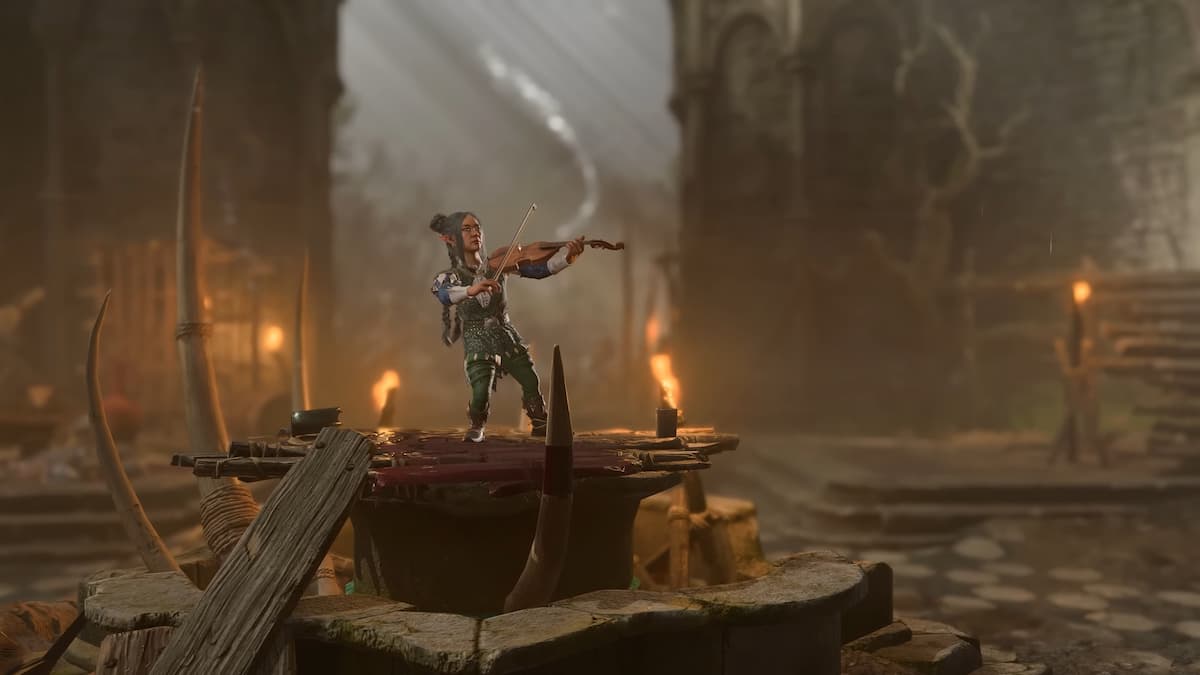

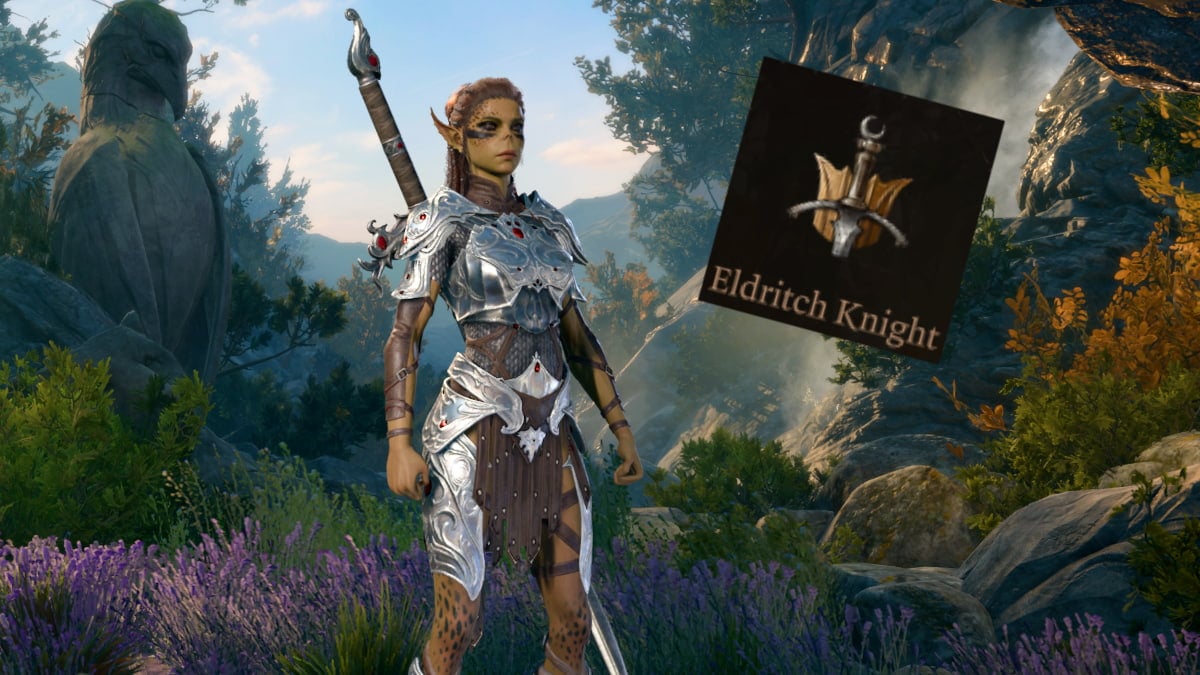



Published: Nov 23, 2024 01:53 pm